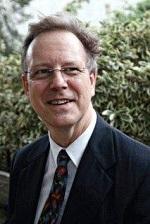Editor’s Note: One of the perks of employment at ActionAIDS is the opportunity to work side by side truly great co-workers. It’s been such a pleasure to get to know Jay Johnson since I started at ActionAIDS three years ago, and this blog posting has now provided me with an opportunity to discuss with Jay, and to then share with you, his experience as a person living with HIV and participating in a high-profile medical research program. Special thanks to our ActionAIDS Intern, Cambriae Bates, for background research assistance.
Jay Johnson is well known to everyone at ActionAIDS – as our Volunteer Coordinator for more than four years, he leads the orientation session attended by all volunteers and new staff, as well as training sessions for our Buddy Program. Previously, Jay was featured as a Take Action Hero in one of our videos for the Buddy Program.
But what many people didn’t know – at least until last year – was Jay’s participation in agroundbreaking HIV treatment study at theUniversity of Pennsylvania’s Perelman School of Medicine. Results of that innovative study, which has implications well beyond treating HIV, were published in March 2014 in the New England Journal of Medicine, resulting in significant news media interest.
The researchers used a technique – “zinc-finger nuclease” – that disabled a gene that HIV needs to invade cells in the immune system. Once cells from the study participants were given this gene editing treatment, they were then returned to the patient’s bloodstream – and the patients were monitored to see if they had any adverse reactions. Or, as the researchers put it somewhat more technically in their paper: “CCR5 is the major coreceptor for human immunodeficiency virus (HIV). We investigated whether site-specific modification of the gene (“gene editing”) — in this case, the infusion of autologous CD4 T cells in which the CCR5 gene was rendered permanently dysfunctional by a zinc-finger nuclease (ZFN) — is safe.” The study confirmed that the process was indeed safe.
With enough cells with disabled genes that repel HIV, patients would not need the antiviral drugs that are currently used to reduce viral load. So this treatment has been viewed as apotential “cure” for HIV disease.
Although the researchers were not attempting to determine whether the procedure is effective in treating HIV, they did find that HIV levels decreased in most patients in the study.
With publication of a significant scientific paper advancing our knowledge in treating HIV, there was significant news media interest. As a result, Jay’s physician asked him whether he would be interested in speaking publicly about his experience. Jay agreed and completed the necessary written consent for disclosure. This was not Jay’s first experience with going public as someone living with HIV – he had let us use his photo several years ago in our ActionAIDS Take Action campaign to promote HIV testing, with the result that his smiling face was seen by thousands of SEPTA riders in Philadelphia.
Now, looking back 10 months, Jay says didn’t fully realize how much attention he would get regarding his participation in the study – although he knew early on that the Associated Press was covering the story, and AP reports “go everywhere.” As it turned out, the story, with Jay’s name and frequently with photos or video interviews, was widely carried by various news organizations: Reuters, CBS News, NBC News, Fox News, The New York Times, WHYY NewsWorks, even Popular Science, not to mention The Voice of Russia – to name just a few.
What was the experience like, going public in a big way as a person living with HIV? Although much progress has been made over the decades in combatting HIV stigma, it is still a serious problem for many people. Jay says that at first he didn’t really know what to expect. But as it turned out, he “had no idea” how consistently positive the response would be from people who learned about his story. As soon as the story ran, Jay explains, he got a call from one of his neighbors, who said “I saw you on the news!” – and who then went on to tell Jay that she was proud of him.
Here at ActionAIDS, we’re also proud of Jay, not only for his involvement with the scientific work going on in studying gene editing as a way of treating HIV and possibly other illnesses. We’re also proud of Jay for putting a human face on what it means to be living with HIV – by both actively publicizing the work that may one day result in a cure, and for delivering a huge slapdown to the shame and stigma that is so often a challenge for our clients with HIV.
–David W. Webber, Senior Development Specialist, ActionAIDS

